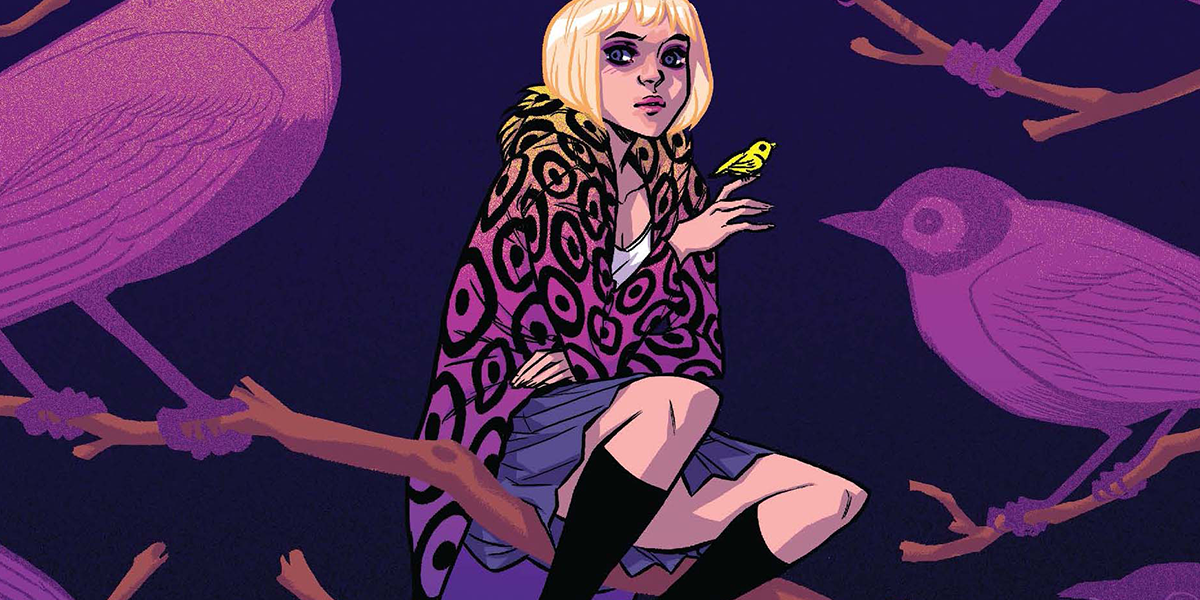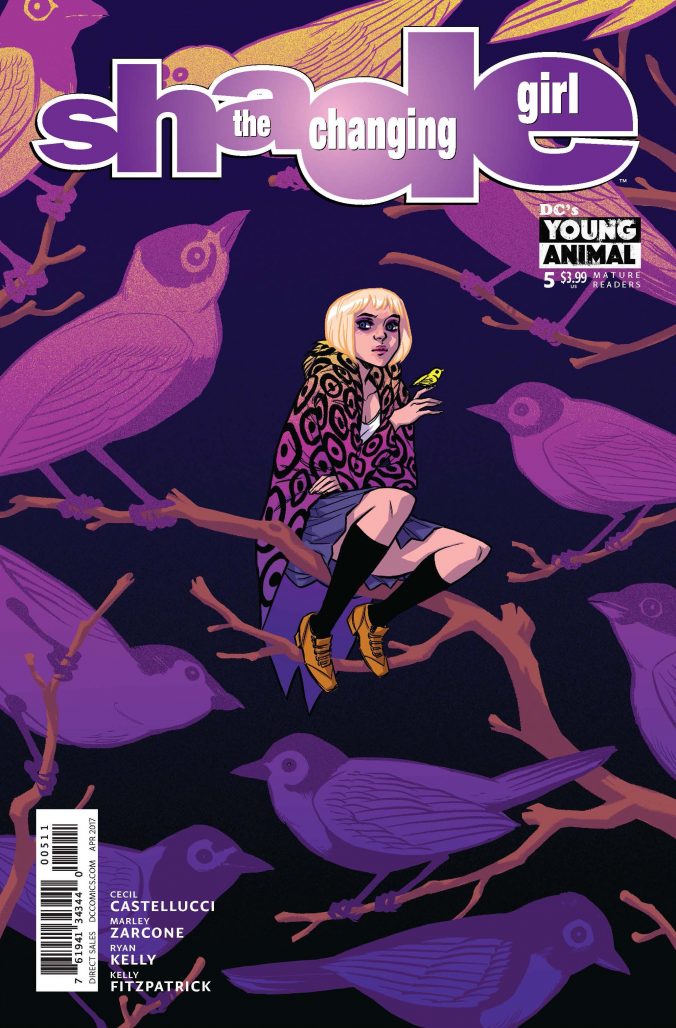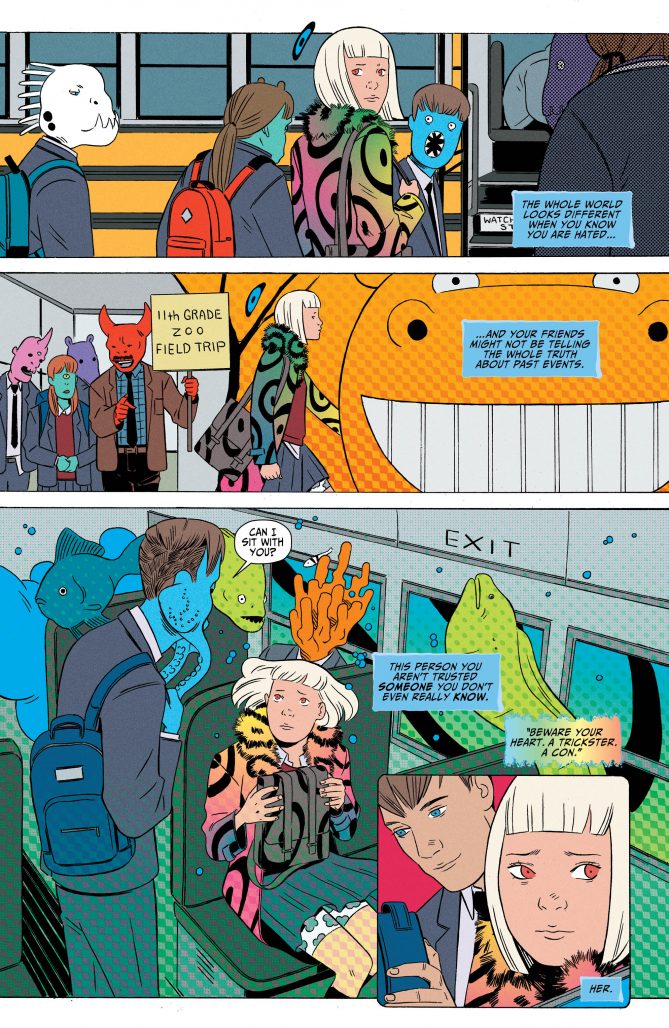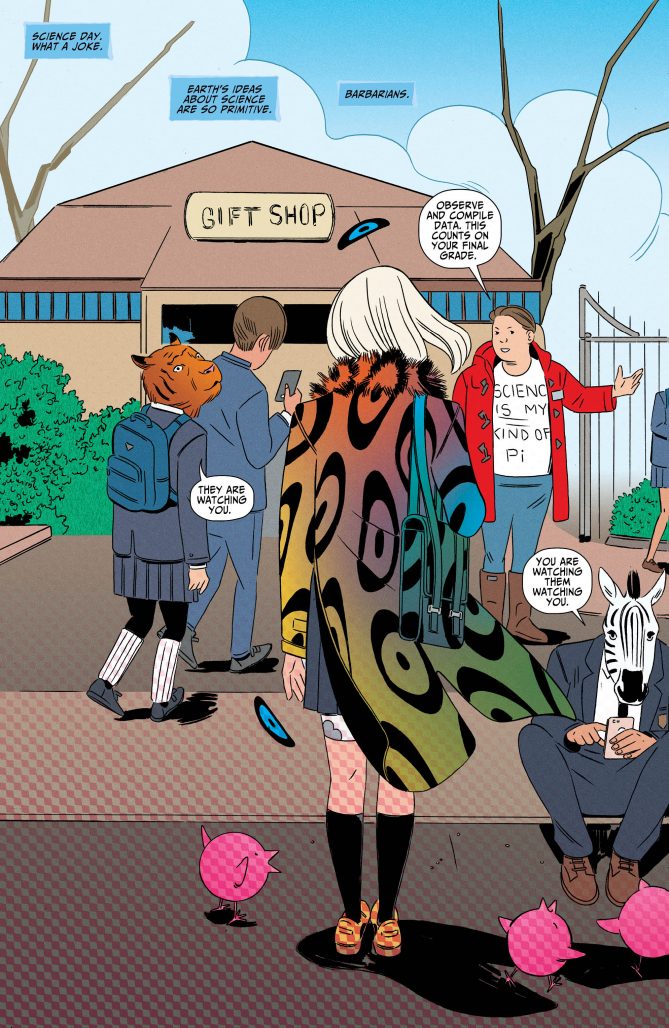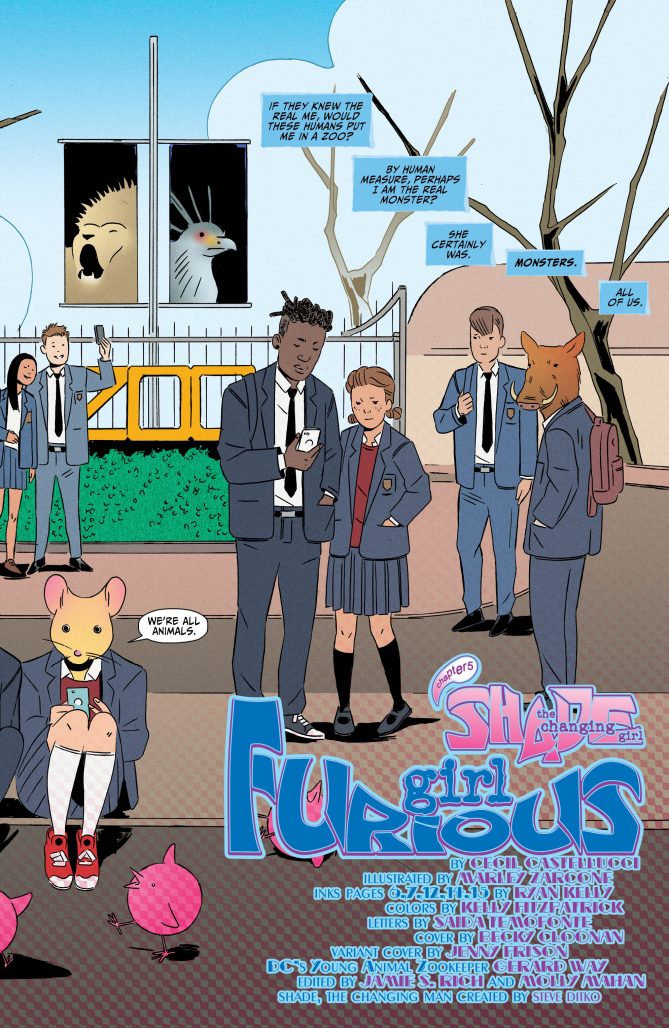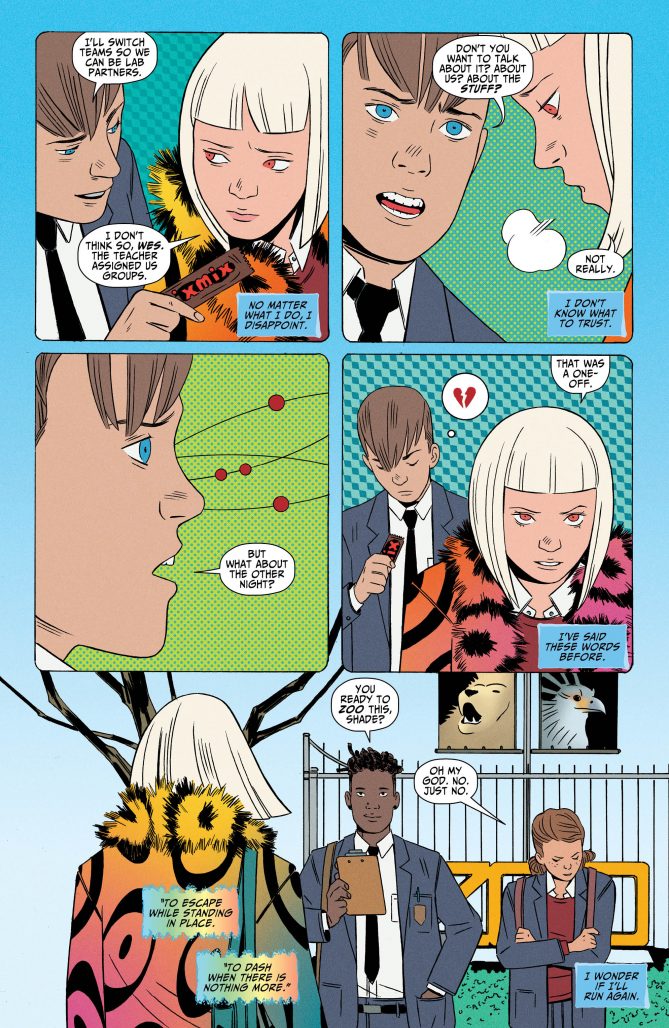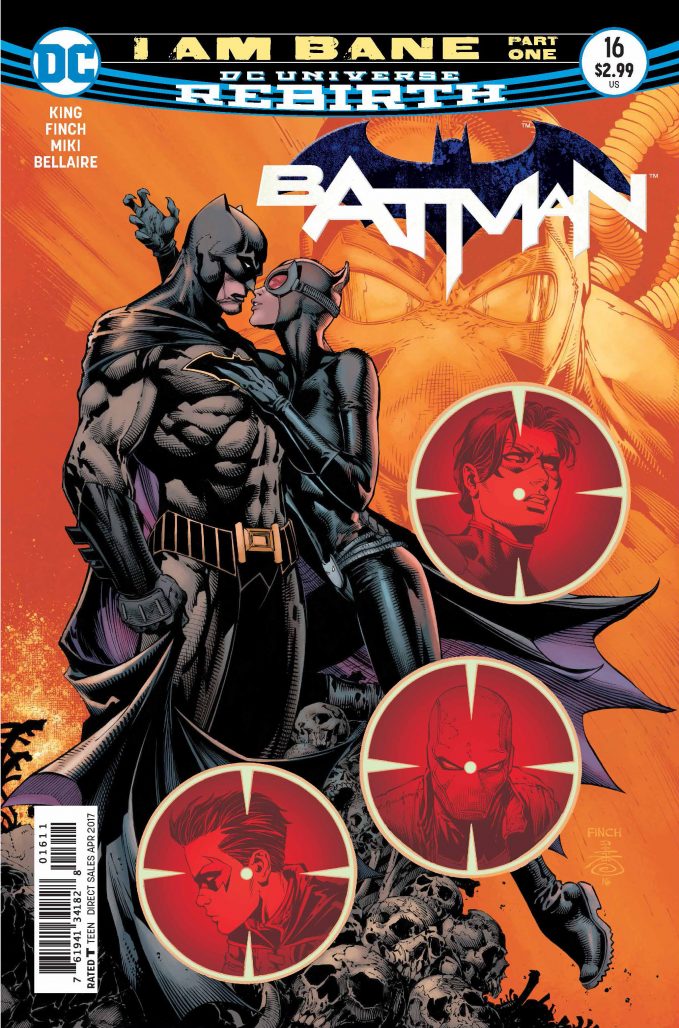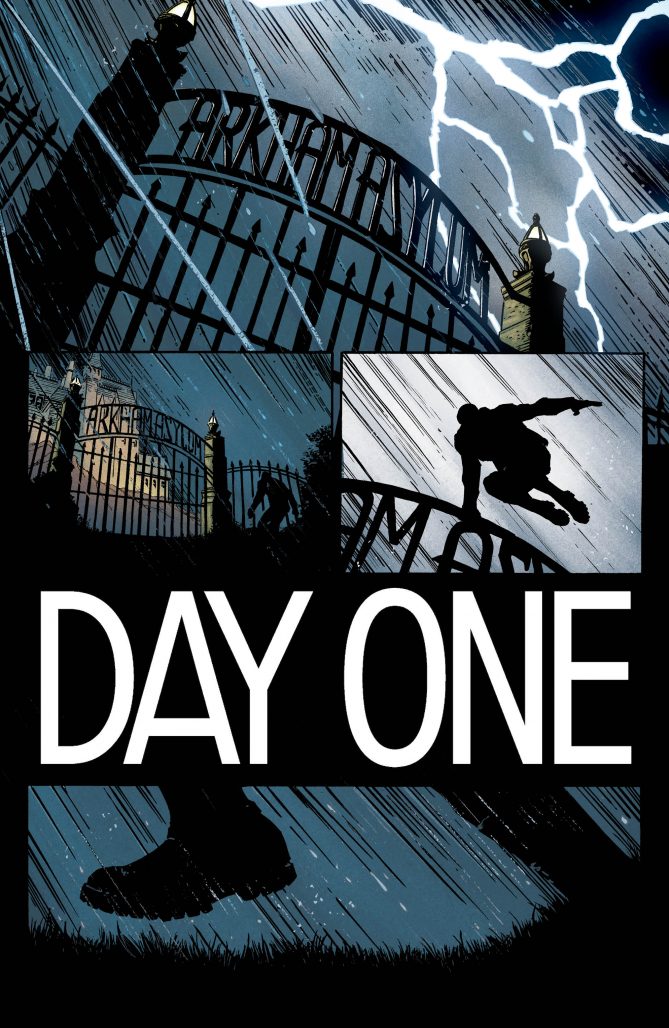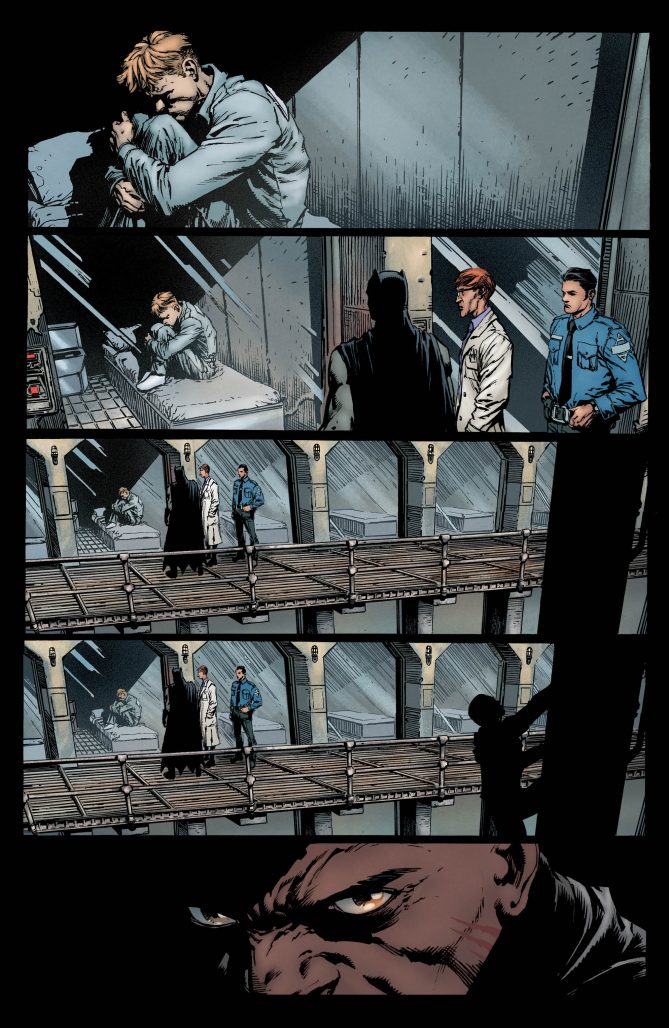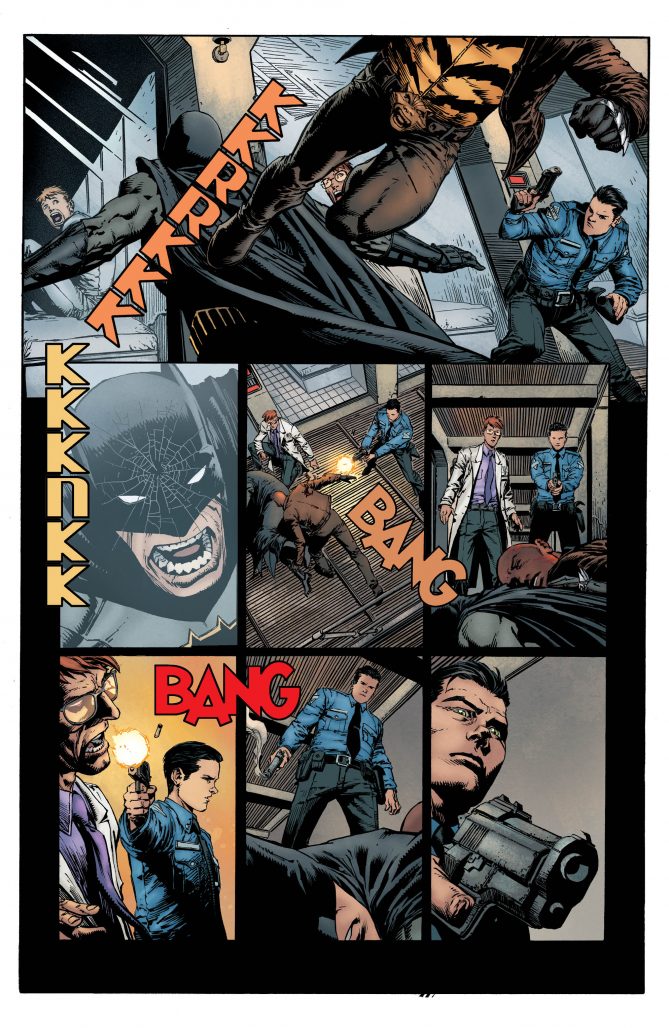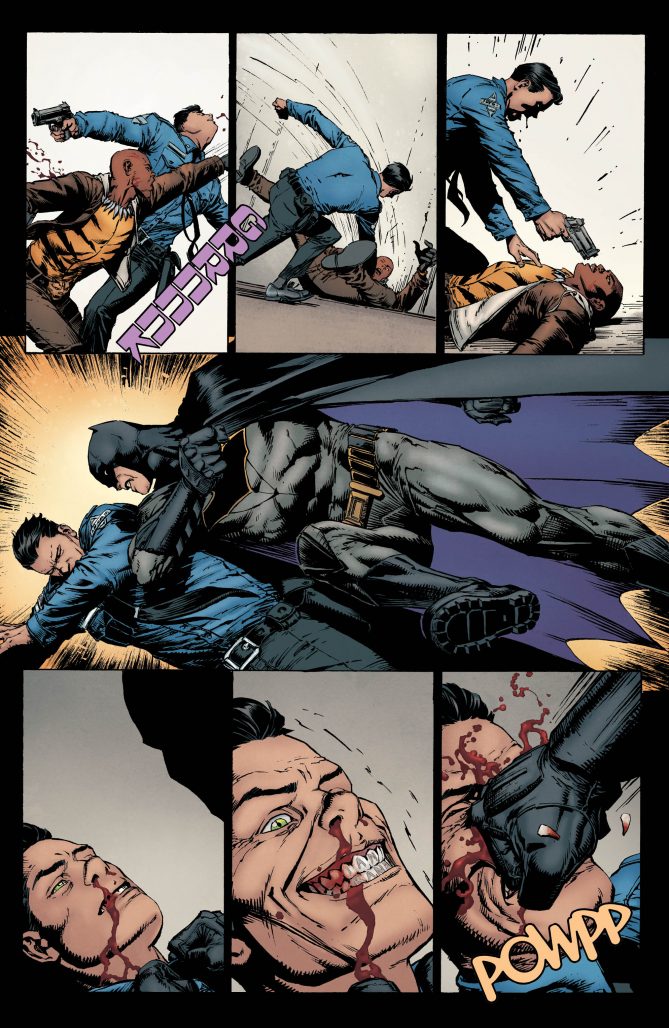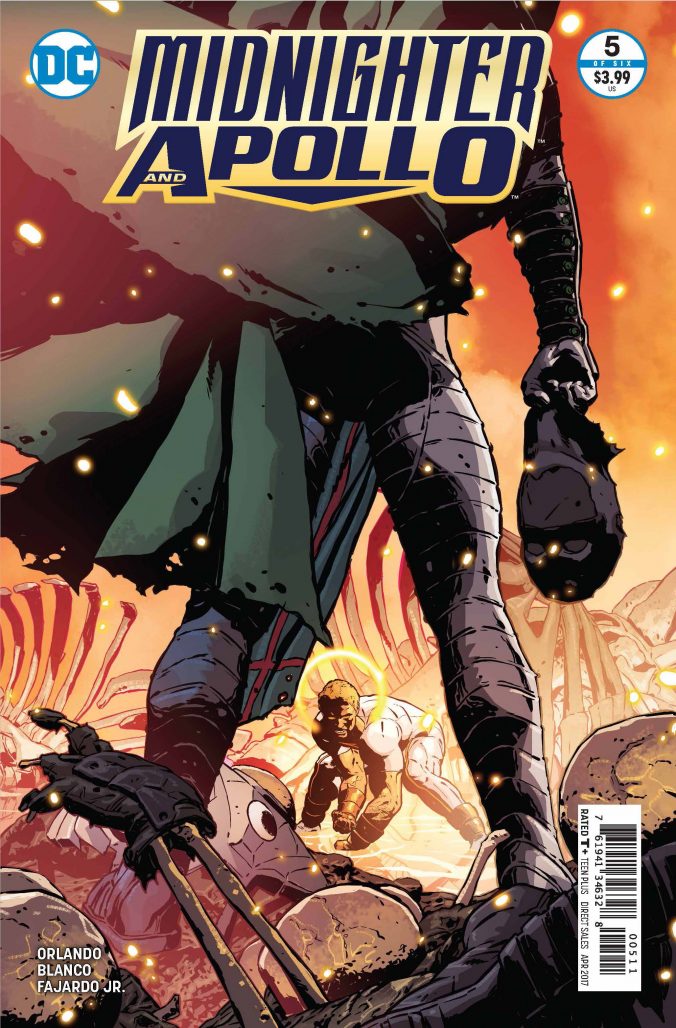In June 2016, DC Comics kicked off the start of its Rebirth initiative. After a wave of criticism surrounding the way they have treated their characters’ rich histories since 2011’s New 52 relaunch, DC has decided to rebrand. They hope that by restoring their characters’ pasts, they will restore readers’ faith in them as well. Do they succeed? That’s what the Comics Beat managing editor Alex Lu and entertainment editor Kyle Pinion are here to discuss. Book by book. Panel by panel.
UPDATE: With a new year comes change. Going forward in 2017, Alex and Kyle will be alternating articles weekly in order to give each other a breather after 7 straight months of going tandem. A little break is always good! This week, Alex takes charge.
Note: the reviews below contain **spoilers**. If you want a quick, spoiler-free buy/pass recommendation on the comics in question, check out the bottom of the article for our final verdict.
 Shade the Changing Girl #5
Shade the Changing Girl #5
Writer: Cecil Castellucci
Artist: Marley Zarcone w/ select inks by Ryan Kelly
Colorist: Kelly Fitzpatrick
Letterer: Saida Temofonte
Shade the Changing Girl is one weird book. At its core, it’s a young adult story about what it means to feel alienated (literally) from the world around you. It’s about growing up and reconciling with the mistakes you made in your past. It’s about how much influence the past has over your present story. Shade is a very poignant bildungsroman wrapped up in a funky, esoteric, weird stylistic shell that makes it one of the most interesting, and by far the most unique, of all the Young Animal titles currently on store shelves.
Early on, I found Shade visually intriguing, but textually confusing. The pacing in this series is as erratic as Loma Shade herself is as she goes between lucidity and madness; as she goes between experiencing her own existence and that of the girl whose body she now occupies. Captions of alien poetry by Rac Shade, whom Loma idolizes, are equal parts poignant and head scratching. All of this fluidity on top of Marley Zarcone’s psychedlic, often boundaryless artwork made the book feel unmoored– a ton of good ideas somewhat undercut by the density of their presentation.
However, I’ve come to find that just because Shade the Changing Girl is a challenging read doesn’t mean it’s not a good one. Even when it is confusing, Loma’s story resonates in an oddly effective way. Over the course of the last four issues, Loma has gotten a deeper and deeper look into the life of Megan, the person who owned the body Loma now inhabits prior to a tragic accident. As of last issue, Loma finally gathered a proper understanding of why the high schoolers that surround her fear and hate her so much. This makes Loma apprehensive as the issue opens. Her feelings of isolation and loneliness are visualized gorgeously as Loma boards a bus to the zoo. She is the only person in the scene, the rest of her classmates reenvisioned as anthropomorphic animals and aliens. Loma is forced to wrestle with the complicated moral crossroads she’s entered by taking Megan’s body because while Megan was a monster, Loma stole her body away from her. Is she a monster too? Are those who do others wrong deserving of the wrongs done to them? Loma concludes, downtroddenly, that we are “monsters. All of us.”
However, morality is never so clearly delineable. Even monsters are capable of beauty. In the bird observatory at the zoo, Shade uses the madness cloak to show her classmates Teacup and River what zoos are like back on Meta, her home planet. They are transported suddenly to a place without barriers to keep the birds inside and for a moment, Loma finds solidarity and peace as all three characters are rendered as anthropomorphic birds. The transformation is visualized in a double page splash where one page shows the three classmates on Meta and the other shows the same visual composition back at the zoo with the characters’ human forms. Even Teacup, who is resistant to the idea that Megan’s body might be inhabited by an alien, is rendered speechless by the sudden shift in perspective. That silent moment of belonging is what all teenagers strive for (or it’s what I wanted, at least). This moment of visual genius allows Shade the Changing Girl to speak directly to the reader without saying anything at all.
That all said, I still have points of contention– primarily that the supporting cast that surrounds shade feels a little underdeveloped. I get the swim team’s disdain for who Shade was, why Teacup is scared of her, and why her neighbor, River, accepts her when no one else will but all these characters so far have been defined primarily, if not solely, by their relationship to Shade/Megan. If Loma’s journey is one of self-discovery and character growth, what are River’s and Teacup’s goals? Why is Teacup so casually allowed in on the fact that the being occupying her former tormentor’s body is an alien? Without a greater goal for everyone to work towards, Shade the Changing Girl still feels a little listless in the macroscopic sense even when it works so well from scene to scene.
Ultimately, Shade the Changing Girl remains a bit of an enigma. It’s a resonant and poignant book with beautiful visuals that are undercut by inconsistent plotting. That said, this latest issue is the strongest out of the series. It uses its singular visual style in a delightful way that captures the many discordant emotions and needs of a teenager. It’s by far the most young adult of the Young Animal titles and fulfills a specific niche in DC’s current catalogue. I don’t support this book unreservedly, but I do recognize its strengths and its importance on the shelf. If you haven’t tried it yet, I certainly think it’s worth a shot.
And god do I love the art in this book. Hats off to you, Marley Zarcone and Kelly Fitzpatrick.
Final Verdict: Buy (with reservations)
 Batman #16
Batman #16
Writer: Tom King
Artist: David Finch
Colorist: Jordie Bellaire
Letterer: John Workman
Over the course of the past 15 issues, King and company have made it a point to develop a deep roster of supporting characters into Batman’s world. While all Batman runs have access to the historical roster of Robins, this take on Batman also includes Gotham Girl, the Suicide Squad Batman assembled in the previous arc “I Am Suicide,” and an increased utilization of Catwoman as a romantic interest and moral grey spot for our hero. Almost all of these characters appear at some point in Batman #16, the start to “I Am Bane,” and give the world a deep texture that makes each subsequent issue feel more resonant than it otherwise would.
Following Gotham Girl’s mental devastation at the hands of of Psycho-Pirate and the latter’s subsequent rescue by Batman from the clutches of Bane (wow this is getting complicated), we find ourselves back in Gotham City as the dark knight prepares to use Psycho-Pirate’s emotionally manipulative powers to undo the damage he caused to Gotham Girl. Batman says this treatment will take five days. The length of time is key here, as it forms the structural backbone of this storyline in a similar way to how the days of the week informed the structure of Batman: Rebirth.
The core of this issue takes place at Batburger, a fast food restaurant that parodies Batman’s and his rogues gallery’s symbolism. The restaurant itself is interesting as it echoes the superhero diner in Mark Waid’s and Alex Ross’ Kingdom Come, acknowledging the way that Batman’s presence in Gotham has affected the culture of his world. In an emotionally revealing moment, Bruce Wayne reveals his feelings about the idolization of his legacy when a cashier asks him if he wants to “jokerize” his fries with a special sauce and Bruce, ever humorless, responds that “the Joker is a homicidal maniac. An agent of pure chaos. He wants to kill us all just so he can laugh over our graves.” The moment is an interesting critique of the way we idolize the Joker in the real world through cosplay and various forms of popular culture.
After Bruce’s terse encounter with the cashier, he sits down with Duke Thomas and a host of his former Robins including Dick Grayson, Damian Wayne, and Jason Todd. Watching all of these characters interact in a casual setting without costumes is a treat. Damian constantly oscillates between precocious child and threatening adult as he complains about getting a Red Hood toy in his Bat-Mite meal and then threatens to kill the real Red Hood sitting next to him over a small food fight. Dick Grayson, who has known Batman longest, knows what Batman is going to say because he “always” says the same thing. In a moment of gallows humor, Duke Thomas realizes that he’s the only one of Batman’s sidekicks at the dinner table who hasn’t died yet and wonders aloud “am I going to be dead?” These moments feel like throwaway lines and small gags, but they play a big role in making Batman’s world feel lived in in a way that it often doesn’t. These unfamiliar locations and character interactions make this Batman story feel unique and only more so over time.
If I had one criticism of this issue, it’s that we don’t truly feel the weight of the stakes here until the shocking cliffhanger at the end of the comic. In Batman #16’s opening scene, we see an armed guard try to break Psycho-Pirate out of Arkham Asylum where Batman is holding him. Batman and Bronze Tiger manage to stop him in a surprising and deftly rendered action sequence, but the guard himself is a relatively weak and faceless threat. Despite all of Batman’s warnings to his allies, Bane’s threats feel oddly ephemeral until they very suddenly don’t. That doesn’t make Batman #16 a boring read, but it does feel a little more listless than previous issues.
In addition, at this point, I find it difficult to recommend new issues of Batman to brand new readers. While this is technically the start of a new arc, Batman’s scene with Catwoman would have much less impact without prior knowledge of the “Rooftops” arc that came before this one. Batman’s interaction with Bronze Tiger would make little to no sense at all considering that his name is never mentioned in the scene in which he appears. That doesn’t mean Batman #16 is a bad book. It’s a great one. It just means that you’ll need to do some catch up by reading trades and recent single issues if you want to jump on board now.
I’d like to conclude by noting that Bruce Wayne is a savage who eats burgers with a fork and a knife..
Final Verdict: Buy (if you’re caught up)
Round-Up
- Midnighter and Apollo continues to wow me with its fifth issue’s release. Steve Orlando and Fernando Blanco are doing some of the best work of their careers as they advance the story of two lovers who would take on Hell itself to save one another. Kyle and I have both praised this series to high heaven in the past, but there’s not much time left before it ends next month so we’re trying to savor the last moments we have with it. The action in this book is some of the most vividly rendered and interestingly composed among all the current DC titles on store shelves and the writing is full of twists and turns as Neron, king of Hell, manipulates the reality around our heroes. I can’t wait to see how this all ends.
- Superman #16 concludes the “Multiplicity” arc somewhat…confusingly? Coming into this book I feel like I had missed an issue in the storyline. We’re bombarded with new information that the characters are privy to but we are not. Apparently between the previous issue and this one, Superman found out that the terrifying figure that has been capturing all the Supermen across the multiverse is named Prophecy. He’s also already had the crap beaten out of him right from the start, denying the reader the satisfaction of witnessing the conclusion to last issue’s cliffhanger. In spite of this though, Superman #16 ends up being a fun, albeit somewhat average, conclusion to this bombastic return to the world Grant Morrison set up in Multiversity. As we learn more about Prophecy and his goals he becomes more interesting, elevating himself above the dull thud that was his initial reveal. We also get another Dr. Oz cameo, which is always interesting. All in all, you probably know whether or not this book’s heartfelt nature and compressed storylines are for you by now. For me, it’s a browse.
Miss any of our earlier reviews? Check out our full archive!


